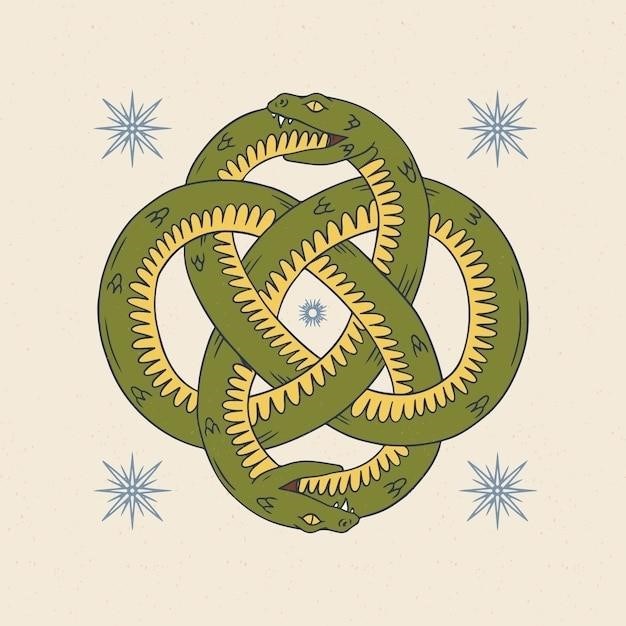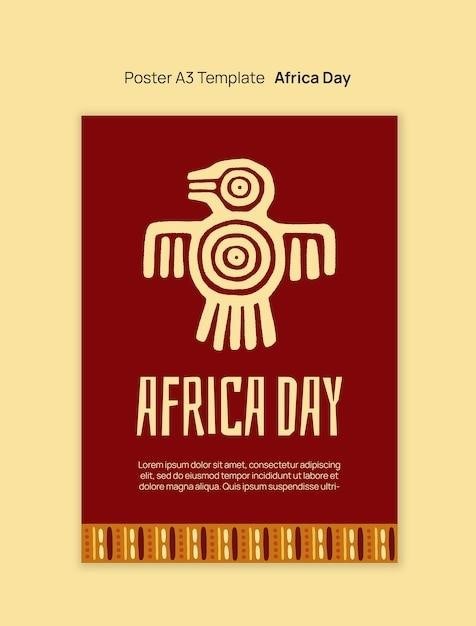Adinkra Symbols and Meanings
Adinkra symbols are visual representations of concepts, proverbs, and aphorisms that originated in the Gyaman people of Ghana and Côte d’Ivoire. They are often used in a variety of contexts, including as decorative elements on cloth, pottery, jewelry, and as symbols of specific concepts or ideas. Each symbol has a specific meaning that is rooted in Akan culture and history. Adinkra symbols are a rich and complex system of visual communication that provides insight into the values and beliefs of the Akan people.
Introduction
Adinkra symbols are a fascinating and intricate aspect of Akan culture, offering a glimpse into the rich tapestry of West African traditions. These visual symbols, originating from the Gyaman people of Ghana and Côte d’Ivoire, transcend mere decoration, serving as potent representations of concepts, proverbs, and aphorisms deeply embedded in Akan wisdom. They embody a unique system of visual communication, where each symbol carries a specific meaning, often conveying profound insights into life, morality, and the human condition. Adinkra symbols are not simply static images; they are dynamic expressions of cultural identity, philosophical thought, and historical experience.
This comprehensive guide delves into the world of Adinkra symbols, exploring their origins, cultural significance, symbolic meanings, and diverse applications. We will unravel the stories behind each symbol, uncovering the rich tapestry of proverbs, aphorisms, and historical narratives woven into their visual forms. Through this exploration, we aim to illuminate the profound wisdom and artistry embedded within the Adinkra tradition, shedding light on its enduring relevance in contemporary Ghanaian society and beyond.
Origins and History
The origins of Adinkra symbols can be traced back to the Gyaman people, an Akan subgroup who inhabited the present-day regions of Ghana and Côte d’Ivoire. The symbols were initially developed as decorative elements on cloth, known as “Adinkra cloth,” which was worn by royalty during significant ceremonies and events. The practice of creating Adinkra symbols is believed to have originated from the Gyaman people’s practice of stamping patterns onto cloth using carved wooden stamps called “Adinkra stamps.”
The symbols themselves are thought to have evolved from a combination of traditional Akan motifs and patterns, influenced by the surrounding natural environment and the cultural experiences of the people. Over time, Adinkra symbols became increasingly complex and nuanced, reflecting the evolving values and beliefs of the Akan people. Their use spread beyond the Gyaman people, becoming an integral part of Akan culture and identity across various Akan subgroups, including the Ashanti people.
Adinkra symbols have continued to evolve and adapt to contemporary societal changes, finding new expressions in various forms of art, design, and even modern fashion. Despite their historical roots, these symbols remain relevant and powerful, serving as a vital link to the rich cultural heritage of the Akan people and reminding us of the enduring wisdom embedded within their traditions.
Cultural Significance
Adinkra symbols hold profound cultural significance for the Akan people, serving as visual representations of their values, beliefs, and worldview. They are more than mere decorative elements; they embody a rich tapestry of wisdom, knowledge, and historical experiences passed down through generations. Adinkra symbols are often used to convey proverbs, aphorisms, and philosophical concepts that guide the Akan way of life, emphasizing the importance of community, respect, wisdom, and perseverance.
The use of Adinkra symbols in various aspects of Akan life, including ceremonies, rituals, and everyday objects, underscores their deep cultural significance. They serve as reminders of the traditions and values that define the Akan people, fostering a sense of shared identity and cultural pride. Adinkra symbols also play a role in education, serving as visual aids to teach moral lessons and promote critical thinking. Their use in art, design, and fashion further demonstrates their enduring relevance and the enduring influence of Akan culture on contemporary society.
The cultural significance of Adinkra symbols extends beyond the Akan people, becoming a source of inspiration and fascination for people around the world. Their intricate designs and profound meanings offer a glimpse into the rich cultural heritage of Africa and the enduring power of visual communication. As symbols of cultural resilience and intellectual depth, Adinkra symbols continue to inspire and educate, reminding us of the importance of preserving and celebrating diverse cultural traditions.
Symbolic Meanings
Each Adinkra symbol carries a specific meaning, often rooted in proverbs, aphorisms, or historical events. These meanings are not simply literal interpretations but rather represent abstract concepts and values central to Akan culture. The symbols are designed to evoke thought and reflection, encouraging viewers to engage with the underlying messages and apply them to their own lives.
For example, the symbol “Sankofa” depicts a bird with its head turned backward, symbolizing the importance of learning from the past. “Adinkrahene,” the “Chief of Adinkra Symbols,” represents leadership, greatness, and charisma. “Aya,” the fern, symbolizes defiance and courage, reminding individuals to face challenges head-on. “Nkonsonkonso,” the interlocking circles, signifies the interconnectedness of human relationships, highlighting the importance of community and unity.
These are just a few examples of the rich symbolism embedded within Adinkra designs. Understanding these meanings requires a deeper engagement with Akan culture and traditions, as well as a willingness to interpret the symbols through a multifaceted lens. The complexity of Adinkra symbolism reflects the depth and richness of Akan thought, offering a valuable window into the values and beliefs of this vibrant culture.
Uses of Adinkra Symbols
Adinkra symbols transcend mere decorative elements, finding practical application in various aspects of Akan life. Traditionally, they adorned funeral cloths, signifying the deceased’s virtues and achievements, and serving as a reminder of their legacy. They also graced ceremonial garments worn by royalty and elders, signifying their status and authority. These symbols were woven into the fabric of everyday life, adding meaning and depth to seemingly ordinary objects.
Beyond textiles, Adinkra symbols found their way onto goldweights, used for weighing gold dust during trade. They were carved onto stools, signifying the importance of family and lineage. These symbols adorned pottery and jewelry, serving as both aesthetic embellishments and carriers of cultural significance. The widespread use of Adinkra symbols underscores their importance in preserving and transmitting Akan wisdom and values across generations.
In modern times, Adinkra symbols continue to be used in various contexts. They adorn T-shirts, jewelry, and other contemporary items, contributing to the global recognition of Akan culture. They are incorporated into artwork and design, serving as a powerful tool for expressing identity and cultural pride. Adinkra symbols remain a vibrant and enduring aspect of Akan cultural heritage, showcasing the enduring power of visual language to transmit knowledge, values, and a sense of belonging.
Adinkra Symbols in Modern Culture
Adinkra symbols have transcended their traditional context, finding a place in modern culture, serving as a powerful symbol of African heritage and identity. They are increasingly used in contemporary art, fashion, and design, showcasing the enduring appeal of their visual language and symbolic meaning. This resurgence of interest reflects a growing appreciation for cultural diversity and the desire to reclaim and celebrate African traditions in the modern world.
Adinkra symbols are incorporated into contemporary artwork, providing a unique and meaningful way to express African perspectives, values, and experiences. Artists use these symbols to explore themes of identity, heritage, and social justice, creating powerful and thought-provoking works that resonate with a global audience. They are also incorporated into fashion design, adding a touch of cultural richness to clothing and accessories.
Adinkra symbols have become a powerful tool for promoting cultural awareness and understanding. They are used in educational settings to teach about Akan culture and history, providing a valuable resource for fostering intercultural dialogue and appreciation. The enduring relevance of Adinkra symbols in modern culture reflects their ability to bridge the gap between tradition and modernity, serving as a potent symbol of African heritage and identity in a globalized world.
Adinkra Symbols and Their Meanings
Adinkra symbols represent a rich tapestry of concepts, proverbs, and aphorisms that encapsulate the wisdom and values of the Akan people. Each symbol is meticulously crafted, conveying a specific meaning that reflects aspects of life, nature, and human relationships. These symbols serve as visual metaphors, offering profound insights into the Akan worldview and their understanding of the world.
The intricate details of each Adinkra symbol hold significant meaning. For instance, the “Sankofa” symbol, which depicts a bird with its head turned backward, represents the importance of learning from the past and drawing wisdom from ancestral knowledge. The “Adinkrahene” symbol, signifying greatness and leadership, is characterized by its bold and striking design, representing the qualities of a strong and respected leader.
Understanding the meanings of Adinkra symbols provides a window into the richness and complexity of Akan culture. They offer a glimpse into the values, beliefs, and wisdom that have been passed down through generations, demonstrating the enduring power of visual language to convey profound messages that transcend time and space.
Adinkra Symbols in Art and Design
Adinkra symbols have transcended their traditional uses and found a powerful presence in contemporary art and design. Their unique aesthetic and profound meanings have captivated artists, designers, and creatives worldwide, inspiring them to incorporate these symbols into various forms of artistic expression. The geometric patterns and symbolic representations found within Adinkra symbols have become a source of inspiration for a wide range of artistic endeavors, from textiles and fashion to graphic design and digital art.
Adinkra symbols have been woven into the fabric of contemporary art, finding their way onto canvases, sculptures, and installations. Artists have explored the symbolic depth of these visual metaphors, incorporating them into their works to convey themes of identity, heritage, and cultural pride. The use of Adinkra symbols in art has not only enriched the visual language of contemporary art but has also served as a powerful platform for cultural dialogue and the celebration of African heritage.
The versatility of Adinkra symbols has extended into the realm of design, where they have been seamlessly integrated into a variety of applications. From graphic design elements to patterns on textiles and ceramics, Adinkra symbols have become a distinctive and culturally significant design language. Their incorporation into design projects reflects a growing appreciation for the aesthetic beauty and symbolic significance of these powerful visual expressions.
Adinkra Symbols in Education
Adinkra symbols have emerged as a valuable tool in educational settings, offering a unique and engaging approach to learning about African culture, history, and philosophy. Their visual appeal and rich symbolic meanings make them an effective means of engaging students in a variety of subjects, from language arts and social studies to mathematics and art. The use of Adinkra symbols in education fosters cultural awareness, promotes critical thinking, and encourages a deeper understanding of the interconnectedness of knowledge.
In language arts classrooms, Adinkra symbols can be used to introduce students to the power of visual communication, encouraging them to explore the relationship between images and ideas. Students can learn about the etymology and meaning of Adinkra symbols, developing their vocabulary and understanding of cultural context. The study of Adinkra symbols can also inspire creative writing activities, where students can craft stories, poems, or essays inspired by the symbolic meanings of these visual metaphors.
Adinkra symbols can also be incorporated into social studies lessons, providing students with a tangible and engaging way to learn about Akan culture, history, and traditions. Students can explore the historical context of Adinkra symbols, examining their origins and evolution. The use of Adinkra symbols in social studies can promote cultural understanding and appreciation, fostering empathy and respect for diverse perspectives.
Adinkra Symbols and Their Role in Identity
Adinkra symbols play a significant role in shaping and expressing the identity of the Akan people. They serve as powerful visual representations of core values, beliefs, and aspirations, fostering a sense of shared heritage and cultural pride. The use of Adinkra symbols in clothing, jewelry, and other forms of personal adornment serves as a visible marker of belonging and cultural affiliation, connecting individuals to their ancestral roots and affirming their place within the Akan community.
Adinkra symbols are not merely decorative elements but serve as potent reminders of the moral and ethical principles that guide Akan society. They embody the values of wisdom, resilience, unity, and responsibility, encouraging individuals to live in accordance with these principles. By incorporating Adinkra symbols into their lives, individuals actively engage with their cultural heritage, reaffirming their commitment to the values that define their identity.
In modern times, Adinkra symbols continue to play a vital role in shaping and expressing the identity of the Akan diaspora. They are used as a means of connecting with their ancestral heritage, maintaining a sense of cultural continuity across generations. Adinkra symbols serve as a powerful reminder of the resilience and enduring spirit of the Akan people, fostering a sense of pride and belonging for individuals who may be geographically separated from their homeland.

Adinkra symbols stand as a testament to the rich cultural heritage and enduring wisdom of the Akan people. They encapsulate a complex system of visual communication that transcends mere decoration, embodying profound values, beliefs, and aspirations. Adinkra symbols serve as a powerful reminder of the importance of shared history, cultural continuity, and the enduring legacy of the Akan people. They inspire individuals to embrace their heritage, live in accordance with the principles they represent, and contribute to the preservation and transmission of this valuable cultural treasure for future generations.
As Adinkra symbols continue to gain recognition and appreciation beyond the Akan community, they offer a powerful opportunity for cross-cultural understanding and dialogue. They provide a window into the rich tapestry of African culture, promoting appreciation for diversity, and fostering a sense of interconnectedness among people from different backgrounds. The enduring relevance of Adinkra symbols serves as a testament to the enduring power of visual language to convey profound meaning and inspire individuals to embrace their heritage, strive for excellence, and contribute to a more just and equitable world.






